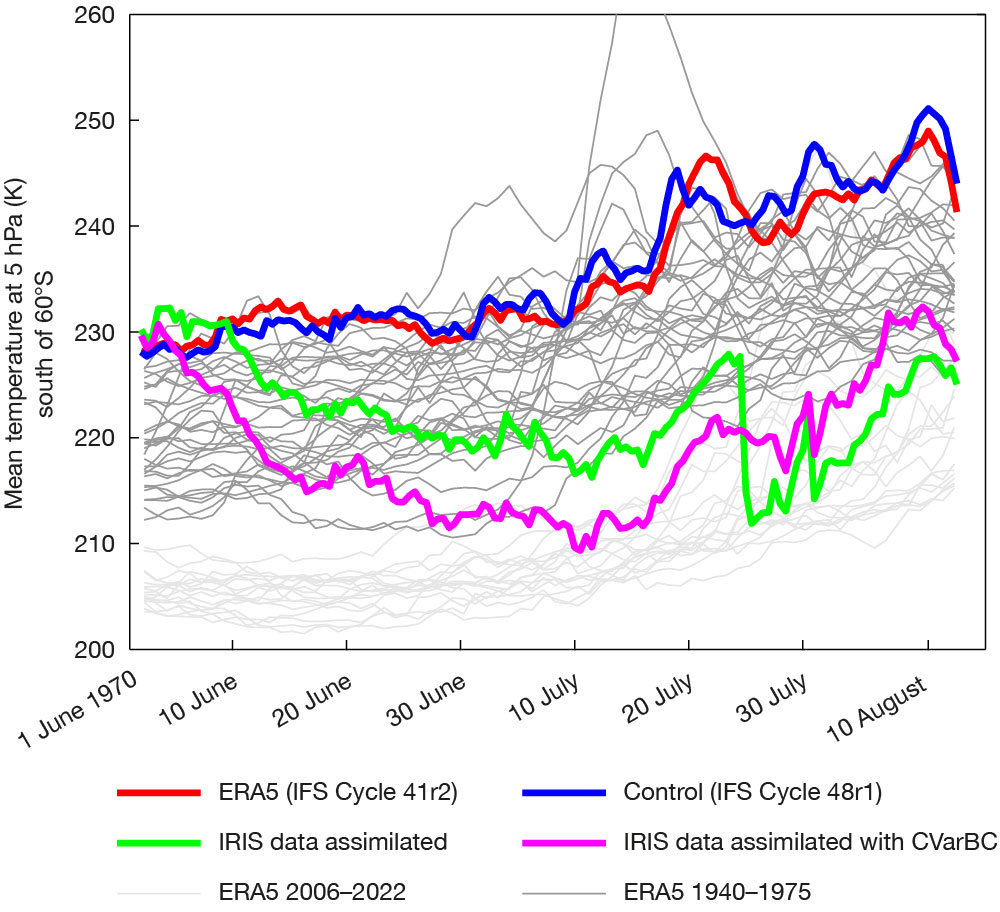During the 1960s and 70s, NASA and the US National Oceanic and Atmospheric Administration (NOAA) flew several pioneering satellite missions. They set out to test the technologies which would later become the bedrock of the modern meteorological satellite observing system, delivering key observational data for global numerical weather prediction (NWP) systems. These technologies included infrared and microwave sounding instruments, which provide information on upper air temperature and humidity.
The EU-funded Copernicus Climate Change Service (C3S), implemented by ECMWF, has supported the assessment of many of these early satellite data records for assimilation in the forthcoming ERA6 reanalysis as well as other future reanalyses, and for extending the production of Essential Climate Variables (ECVs) as far back as possible. These activities build on data rescue programmes initiated at NASA and NOAA, which recovered the raw data and collated the original documentation. The C3S activities aim to improve the assimilation readiness of the data, by developing and testing the radiative transfer models required to assimilate the data and assessing the bias characteristics of the data.
Much of this work is being carried out in close collaboration with C3S partners EUMETSAT and Spascia. The reprocessed datasets include a range of early infrared imagers carried on the Nimbus series of satellites starting in 1964, as well as several sounding instruments flown as part of NASA, NOAA and US defence programme missions.
The IRIS instrument
During the first phase of the C3S programme, an initial project focused on early infrared sounders, including the Infrared Interferometer Spectrometer (IRIS) hyperspectral instrument operated on Nimbus‑4 from April 1970 to January 1971. In common with all pre-1979 satellite missions, IRIS was relatively short-lived and yet provided valuable and unique measurements in previously unobserved regions, including for example the polar stratosphere. Notably, IRIS pre-dates the first interferometer to be deployed for operational NWP (the Infrared Atmospheric Sounding Interferometer, IASI) by 36 years. The data from IRIS had been the subject of earlier investigations at ECMWF, which showed the data to be of some promise for assimilation. IRIS observations cover the spectral range 400–1,600 cm–1 at a spectral resolution of 2.5 cm–1. Recently IRIS data have been introduced into ECMWF’s Integrated Forecasting System (IFS) in advance of the start of the next C3S global reanalysis, ERA6, due to start in mid‑2024.

In advance of the assimilation tests, scientists at Spascia confirmed that our current cloud detection methods work well for IRIS, that the data exhibits biases that are manageable using variational bias correction (VarBC), and that the data quality is generally good. Furthermore, through a detailed analysis of independent data from a co-hosted multi-spectral instrument on Nimbus‑4 as well as rocket-sonde data from the time, Spascia identified significant biases in the southern winter polar stratosphere in ERA5.
IRIS data was assimilated to assess the impact on analyses and forecasts as well as the effect of the data on the winter polar biases. Despite the relative sparsity of the data, the impacts from these initial tests were significantly positive. For example, southern hemisphere short-range forecasts of surface pressure, upper-air temperatures and winds are improved by 5–7%.
Furthermore, the impact of the IRIS observations on polar stratospheric biases is dramatic (see the figure). A significant warm bias at 5 hPa in ERA5 during the southern polar winter of 1970 is corrected by the IRIS data over a period of six weeks. The application of constrained VarBC (CVarBC) further improves the impact of the IRIS data by limiting the amount of bias absorbed by VarBC and allowing the analysis state to cool to a more realistic state more rapidly.
For ERA6, model bias correction methods are currently under development to help address such stratospheric biases. The findings shown here illustrate how the IRIS dataset will be instrumental to assessing the performance of these novel methods during the ERA6 early period. Furthermore, the methodologies developed for this assessment will be applied to similar, high-quality reference data, such as that from the Spektrometer Interferometer (SI-1) flown on Soviet satellites, to be delivered by EUMETSAT in 2023.
